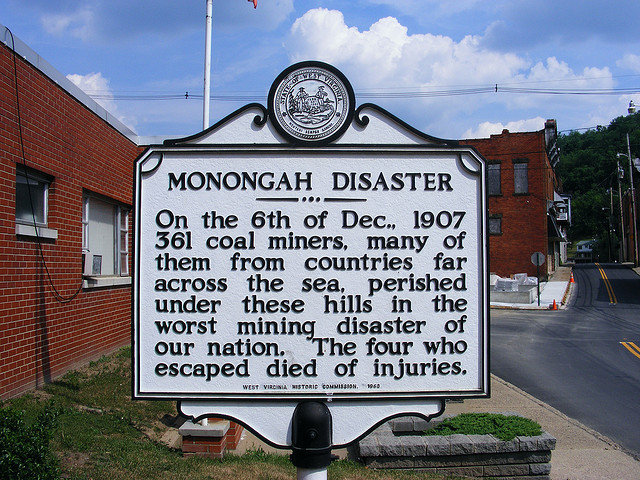Learning from the Past, Part 6 [Hopefully Final, But It Won’t Be…]

This is the last article in this series… for now. ?The advantages of the modern era… I went back through my taxes over the last eleven years through a series of PDF files and pulled out all of the remaining companies where I lost more than half of the value of what I invested, 2004-2014. ?Here’s the list:
- Avon Products [AVP]
- Avnet [AVT]
- Charlotte Russe [Formerly CHIC — Bought out by Advent International]
- Cimarex Energy [XEC]
- Devon Energy [DVN]
- Deerfield Triarc?[formerly DFR, now merged with?Commercial Industrial Finance Corp]
- Jones Apparel Group [formerly JNY — Bought out by Sycamore Partners]
- Valero Enery [VLO]
- Vishay Intertechnology [VSH]
- YRC Worldwide [YRCW]
The Collapse of Leverage
Take a look of the last nine of those companies. ?My?losses?all happened during the financial crisis. ?Here I was, writing for RealMoney.com, starting this blog, focused on risk control, and talking often?about rising financial leverage and overvalued housing. ?Well, goes to show you that I needed to take more of my own medicine. ?Doctor David, heal yourself?
Sigh. ?My portfolios typically hold 30-40 stocks. ?You think you’ve screened out every weak balance sheet or too much operating leverage, but a few slip through… I mean, over the last 15 years running this strategy, I’ve owned over 200 stocks.
The really bad collapses happen when there is too much debt and operations fall apart — Deerfield Triarc?was the worst of the bunch. ?Too much debt and assets with poor quality and/or repayment terms that could be adjusted in a negative way. ?YRC Worldwide — collapsing freight rates into a slowing economy with too much debt. ?(An investment is not safe if it has already fallen 80%.)
Energy prices fell at the same time as the economy slowed, and as debt came under pressure — thus the problems with Cimarex, Devon, and to a lesser extent Valero. ?Apparel concepts are fickle for women. ?Charlotte Russe and Jones Apparel executed badly in a bad stock market environment. ?That leaves Avnet and Vishay — too much debt, and falling business prospect along with the rest of the tech sector. ?Double trouble.
Really messed up badly on each one of them, not realizing that a weak market environment reveals weaknesses in companies that would go unnoticed in good or moderate times. ?As such, if you are worried about a crushing market environment in the future, you will need to stress-test to a much higher degree than looking at financial leverage only. ?Look for companies where the pricing of the product or service can reprice down — commodity prices, things that people really don’t need in the short run, intermediate goods where purchases?can be delayed for a while, and anyplace where high fixed investment needs strong volumes to keep costs per unit low.
One final note — Avon calling! ?Ding-dong. ?This was a 2015 issue. ?Really felt that management would see the writing on the wall, and change its overall strategy. ?What seemed to have stopped falling had only caught its breath for the next dive. ?Again,?an investment is not safe if it has already fallen 80%.
There is something to remembering rule number 1 — Don’t Lose Money. ?And rule 2 reminds us — Don’t forget rule number 1. ?That said, I have some things to say on the positive side of all of this.
The Bright Side
A) I did have a diversified portfolio — I still do, and I had companies that did not do badly as well as the minority of big losers. ?I also had a decent amount of cash, no debt, and other investments that were not doing so badly.
B) I used the tax losses to allow a greater degree of flexibility in investing. ?I don’t pay too much attention to tax consequences, but all concerns over?taking gains went away until 2011.
C) I reinvested in better companies, and made the losses back in reasonably short order, once again getting to pay some taxes in the process by 2011. ?Important to note: losses did not make me give up. ?I came back with vigor.
D) I learned valuable lessons in the process, which you now get to absorb for free. ?We call it market tuition, but it is a lot cheaper to learn from the mistakes of others.
Thus in closing — don’t give up. ?There will be losses. ?You will make mistakes, and you might kick yourself. ?Kick yourself a little, but only a little — it drives the lessons home, and then get up and try again, doing better.
Full disclosure: long VLO — made those losses back and then some.

![Learning from the Past, Part 6 [Hopefully Final, But It Won’t Be…]](https://alephblog.com/wp-content/themes/overlay/images/blog-img-3-2.png)








